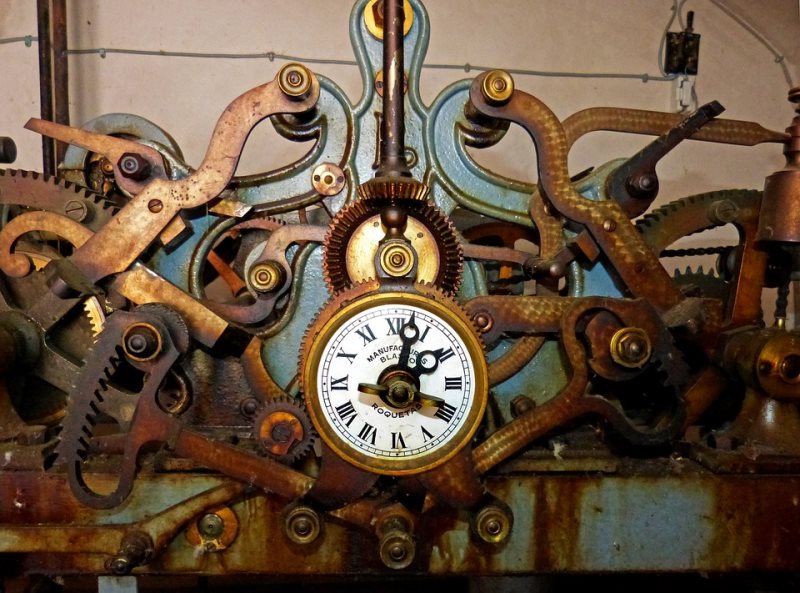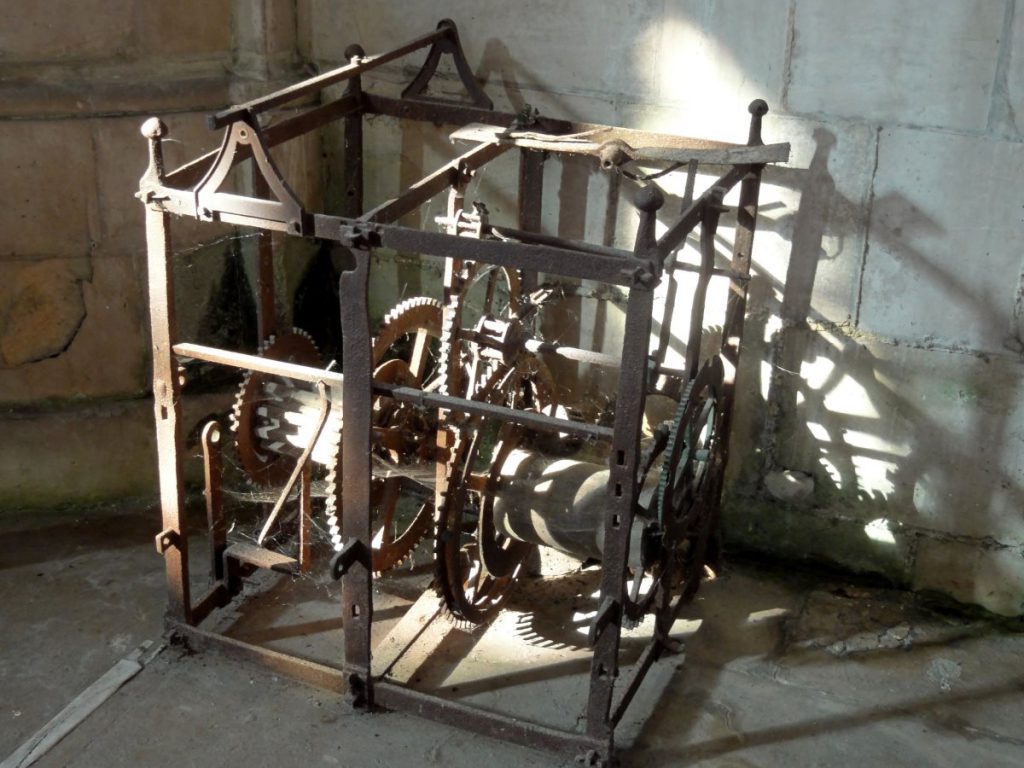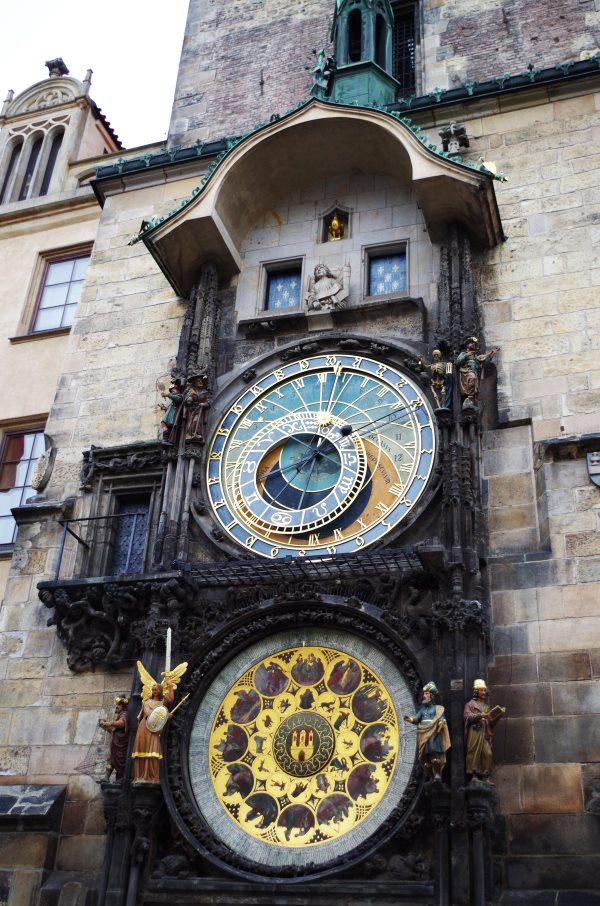Gnomon, sundial, clepsydra or hourglass … Since the world is world, Man has sought to circumscribe the inexorable flow of time, in order to measure the intervals for its use. Towards the end of the Middle Ages, the story of the measurement of time gives way to a true history of watchmaking, when the first mechanisms are installed on the steeples and belfries. It is the era of the medieval clock and the birth of mechanical watchmaking, which opened the way to the modern conception of time.
The medieval clock: a case of belief
Emmanuel Poulle, in “For a typology of medieval astronomical watchmaking” (to read in its entirety here) notes that the clockmaking knows, in the XIVe century, an extraordinary development. He adds that we can perceive its importance by observing the increase in the use of the term “clock”, now used to designate not the various instruments of time measurement (gnomon and other clepsydres), but many clocks in the sense where we hear it today.
In its early days, mechanical watchmaking, as before it the “simple” measure of time, is a matter of men of the Church: it was the monks who imported the clock to fire in order to organize the canonical hours nocturnal, and it is the religious, again, who offer high technicians the opportunity to design and realize the first mechanical clocks to install on the steeples and towers of their churches. Sometimes they are astronomical clocks, able to measure the sun’s path in the sky.
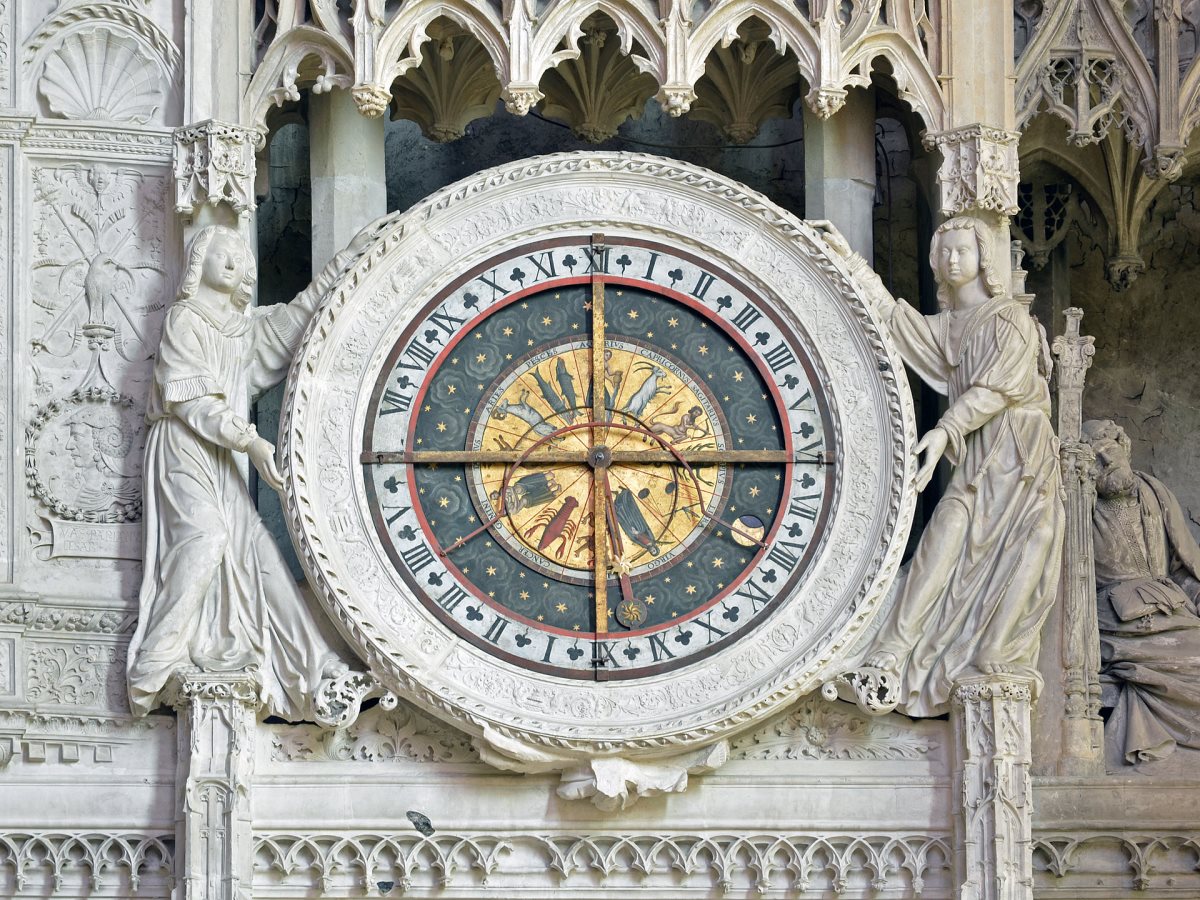
In fact, the first European clocks were designed less to tell the time than to ring it. There are traditionally two types:
- The room clock, or alarm clock: it is intended for the cell of the watchman of the clock, in the abbey or the monastery, and makes a bell ringing indicating to the abbot that it is time for prayer.
- The clock tower or tower: placed high up, in monastic establishments or churches, it automatically sets in motion the big bell signaling the time of prayer, the same bell that the attendant had to activate after being invited by the bedroom clock.
When the measurement of time becomes mechanical
The medieval clock represents a significant change in the time measurement instruments used so far: by its nature, because it imposes a gesture of hammering on a bell, it embodies a new logic. It is no longer enough to perceive the time that elapses; the community still needs to be informed about the timing of the devotions, and to do this, develop systems that can sound the hours.
The medieval clock is thus the result of a monastic necessity materialized in the form of a revolutionary invention, in its certainly primitive form: the escapement, whose object is to control the way in which the driving force escapes towards the ‘clock. A mechanical clock can work for hours, thanks to the control of the fall of a weight. This capital innovation is nothing more than the birth, strictly speaking, of the mechanisms that will pave the way for modern watchmaking.
From then on, throughout Europe, large clocks were installed at the top of bell towers and belfries. By sounding the same hours, they broadcast a new perception of time. The towers of churches are transformed into clock towers; the steeples become campaniles; the astronomical clock is adorned with astonishing movements and original mechanisms; the passage of time is transformed into a public service, offered to everyone in the community.
The watchmaking profession during the medieval period
If one can not then speak literally of “watchmaker”, medieval watchmaking nevertheless has its valuable technicians, and until the fifteenth century, it is indeed a profession that takes shape slowly, aggregating many technical skills at the service of the same purpose. Initially, watchmaking remains an ancillary activity for these goldsmiths, locksmiths, blacksmiths and blacksmiths who experiment and invent original mechanisms; they help astronomers, geometers and philosophers who seek to imprison time in new temporal machines (see on this page).
The fragility of the binding mechanisms to a constant attention, the first real trade related to the medieval watchmaking is that of guardian: it supports, in residence, in the city or the village, the maintenance of the local timepiece. Most often, it is the manufacturers who take on this task: moving with all their tools and personnel, including forging, they make and install the clocks on public monuments, then come back at regular intervals to to ensure its operation, in a limited geographic area.
But very soon, we see the appearance of the first watchmakers worthy of this name: the Englishman Richard de Wallingford (around 1330) and the Italian Giovanni Dondi (second part of the fourteenth century), both masters in the art of building astronomical clocks. From these two precedents, some watchmakers acquire a certain renown; but it was not until the end of the fifteenth century and the official status granted by Louis XI royal watchmakers that the only technicality is transformed into a recognized profession, marking, in fact, the end of medieval watchmaking and the beginning of the modern watchmaking.
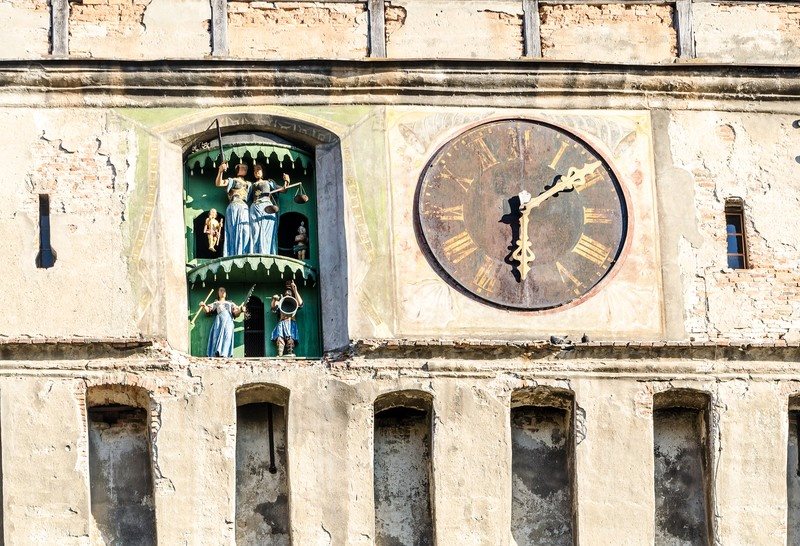


 Français
Français